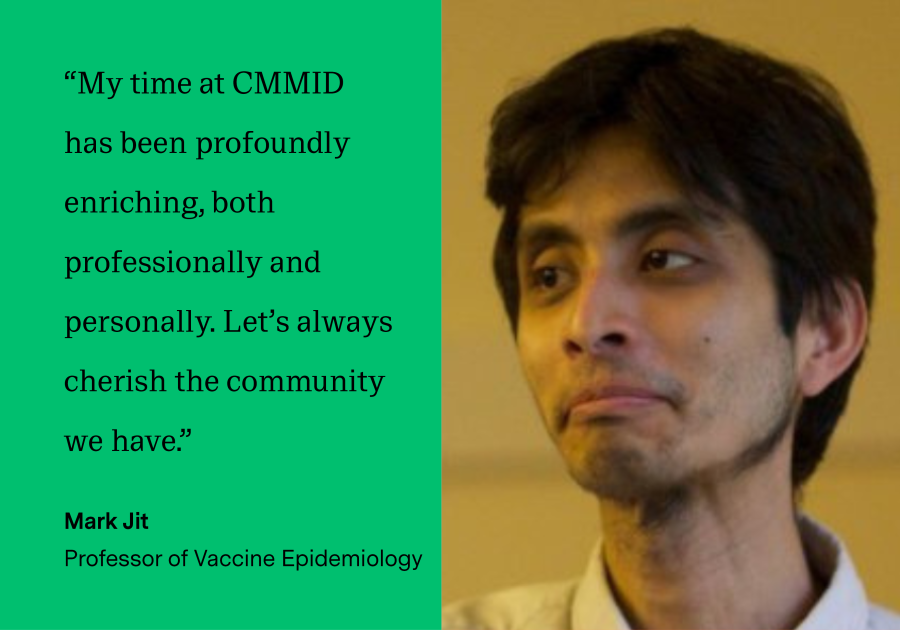
My journey in the field of infectious disease modelling began in 2006 when I responded to a job ad for a vaccine modeller at the Modelling and Economics Unit of the Health Protection Agency. The Unit was at that time led by John Edmunds, before he moved to LSHTM in 2008 to lead the modelling group there. A few years after he left, I took on a 5% contract at LSHTM working with him. Over time, that 5% expanded to 50% and eventually to 100% when I transitioned fully to LSHTM. Over that time, I’ve had the privilege of witnessing incredible growth and development in CMMID, in numbers, diversity and global impact. This is a testament to its dynamic and collaborative environment.
Even as it grew, one of the aspects I've deeply appreciated about CMMID is the sense of community. People seem to genuinely enjoy hanging out with each other – whether it’s to discuss code, write a collaborative paper or bake cakes. What’s very special is that new people and visitors are as welcome in the group as people who have been around for years. That gives the community global reach – there are CMMID alumni around the UK and the world, some starting their own modelling groups in places where they were none before. CMMID also benefits from the wealth of experiences and insights that people from different backgrounds and parts of the world bring. This has fostered a unique understanding of infectious disease issues, which is reflected in CMMID’s work and collaborations.
Another remarkable feature of CMMID worth protecting is its flexibility. In that sense being part of CMMID hasn’t been such a big move from the days at the Health Protection Agency, with the capacity to rapidly respond to emerging needs. Over the past decade, I’ve seen CMMID folk get involved in pivotal work around the West African Ebola outbreak, the emergence of Zika in different parts of the world and of course the COVID-19 pandemic. Modellers have also pivoted to respond to growing threats and opportunities such as antimicrobial resistance, climate change and AI.
As I prepare to transition to NYU, I’m struck by both the contrasts and the similarities. Moving from a large department within a relatively small institution to a small department within a large university presents both challenges and exciting prospects. But one common aspect is the same global interconnectedness I see at LSHTM, with branch campuses and academic centres and researchers working around the world. I believe there are lots of opportunities for continued partnership and collaboration, and it’s a priority for me to develop these. By leveraging the strengths of both institutions, we can enhance our collective impact on global health.
In conclusion, my time at CMMID has been profoundly enriching, both professionally and personally. The experiences and relationships I've built will undoubtedly influence my work at NYU. As we all embark on new chapters of our lives, let’s always cherish the community of colleagues and friends we have at CMMID.
- Written by Mark Jit
If you enjoyed this article and would like to build a career in global health, we offer a range of MSc programmes covering health and data, infectious and tropical diseases, population health, and public health and policy.
Available on campus or online, including flexible study that works around your work and home life, be part of a global community at the UK's no.1 public health university.
